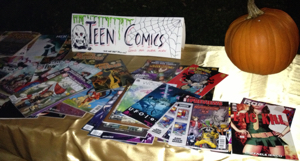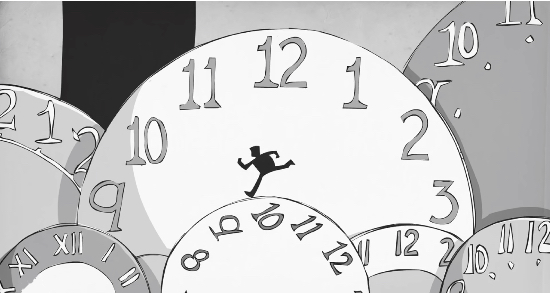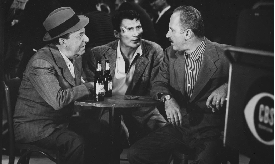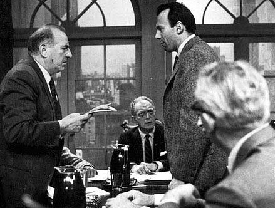Ed Catto: Trick or Treat For Comics
 For the umpteenth year in a row, we’ll be giving out comics instead of candy for Halloween today. We’re typically met with a mixture of surprise and delight… by both kids and their parents. Returning families call us “the comic book house” and tell us that they remember this tradition from last year.
For the umpteenth year in a row, we’ll be giving out comics instead of candy for Halloween today. We’re typically met with a mixture of surprise and delight… by both kids and their parents. Returning families call us “the comic book house” and tell us that they remember this tradition from last year.
The occasional parent confides in me that “this is the kids’ favorite house.” They probably say that at all the houses, but it’s still nice to hear.
When I was kid, the standard Halloween traditions were often modified. “Trick Or Treat for UNICEF” was designed for kids to collect small donations from neighbors as they’d go from house-to-house with a specially designed orange UNICEF container. I fondly recall TV ads that basically taught young trick-or-treaters to scream “Trick or Treat for UNICEF” when they knocked on doors. The program still continues today.
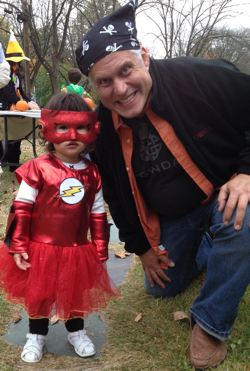 Another modified tradition, which must have been either a local one or an Italian one, was that one the night before Halloween we’d put on our costumes and my parents would drive us around town to several relatives’ homes. We had a big Italian family in town and getting to their houses to hold them up for the yearly candy ransom clearly mandated a car and driver. My brother and I would gleefully don our costumes for this pseudo “dress rehearsal” and of course, enjoy collecting the extra candy in that insatiable way that all trick-or-treaters do.
Another modified tradition, which must have been either a local one or an Italian one, was that one the night before Halloween we’d put on our costumes and my parents would drive us around town to several relatives’ homes. We had a big Italian family in town and getting to their houses to hold them up for the yearly candy ransom clearly mandated a car and driver. My brother and I would gleefully don our costumes for this pseudo “dress rehearsal” and of course, enjoy collecting the extra candy in that insatiable way that all trick-or-treaters do.
So it’s natural that by giving away comics instead of candy, we’d put our own twist on the annual candy tradition. But I’ve heard about many other comics fans giving away comics for Halloween.
For the past few years, we’ve been setting up two tables: one filled with “All Ages” comics that are appropriate for the youngest kids and another with comics more suited for older kids. We label each table. In the early hours we only need the younger kids table, and in the later hours we just leave the older kids table out.
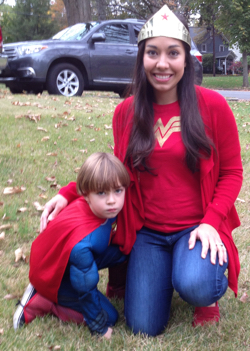 The kids never seem to pick out the comics you’d expect them to choose. It’s fascinating to see the selection process when kids are presented with a table full of choices. Sometimes they choose by character or just by an interesting cover.
The kids never seem to pick out the comics you’d expect them to choose. It’s fascinating to see the selection process when kids are presented with a table full of choices. Sometimes they choose by character or just by an interesting cover.
Some kids know just what they want and quickly sift through the choices. Too many kids are unfamiliar with comics are amazed to see media properties in comics form. “Scooby Doo? Cool!”
In this age where a hero like Iron Man who used to be a B-lister has hundreds of kids dressing like him, the impact of comic heroes at Halloween is palpable. Every kid now knows Iron Man and Thor, but few of them have read, or even seen, an Iron Man or Thor comic.
I love the kids that struggle to make a choice between two comics. If we have enough comics, we typically let them get both.
 But traditions change. We’re empty nesters and we’ve just moved after 26 years to a town called Auburn, nestled in the Finger Lakes region of New York State. It’s a great town with a rich nerd history.
But traditions change. We’re empty nesters and we’ve just moved after 26 years to a town called Auburn, nestled in the Finger Lakes region of New York State. It’s a great town with a rich nerd history.
Auburn was blessed with one of the pioneering comic shops back in the 70s and several after. There was also a back issue dealer who was selling in Auburn before the Overstreet Comic Book Price Guide was established. He’d use the Passiac Book Guide to establish pricing. On the other hand, Auburn NY was the site of one of those comic book burnings in the 50s.
It will be fascinating to see how our new neighbors react to comics on Halloween. I’ll let you know next year how it all went.
Orson Welles’ Mercury Radio Theater was an old time radio program that adapted classic books as radio dramas. But on Halloween in 1938, they tried something a little different with their H.G. Wells’ War of The Worlds adaptation. Orson Welles cast himself as a reporter broadcasting live from the horrific scene of the Martian invasion. Some listeners who tuned in midway through the broadcast thought it was real.
Last year, a podcast on the Panoply Network tried the same trick with a drama called The Message. It’s a spooky thriller, with clever twists and turns. And they played it straight – just like Orson Welles did all those years ago. If you need one more Halloween fright this year, give it a try!



